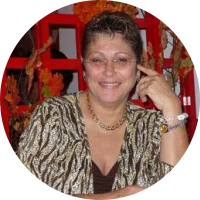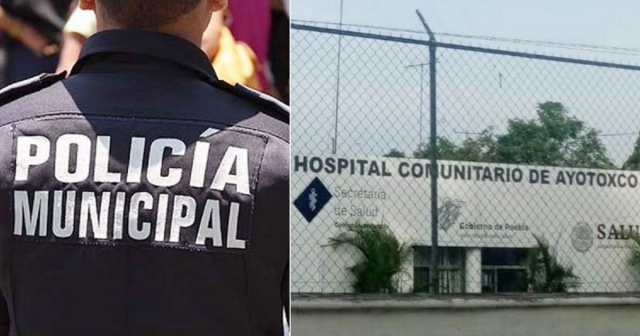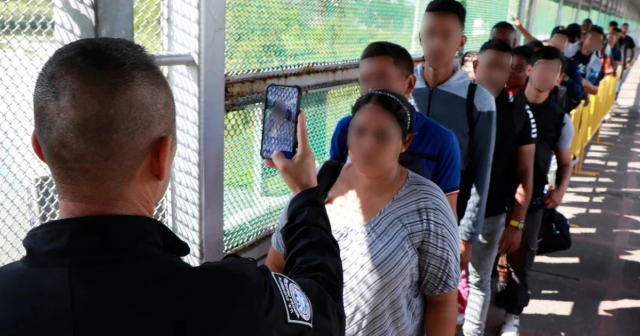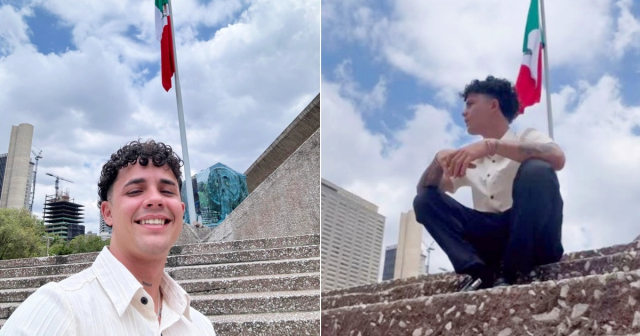
I met the best of Cuban gymnastics from the 80s during my first visit to the National School of the discipline located on the central Belascoain street in the Centro Habana municipality.
The gold team, led by Casimiro Suárez, was also made up of world-class gymnasts, including our interviewee today, the floor exercise magician, Jesús Rivera.
As is the case with most Cuban athletes who brought glory to the country, few know what has become of the star gymnast. Where is he, what is Jesús Rivera doing?
A pleasure to greet you, Julita, our beloved journalist from the old days. I have been living in Cancun, Mexico, since 2005. I work at the Oasis hotel chain, in the entertainment department, in charge of the operation of nightclubs, among other duties as an acrobat coordinator; in general, everything related to entertainment. I've been in this role since 2010. You may wonder how this change came about and why I didn't stay connected to artistic gymnastics like many of my colleagues. All of this has its story, but I would like to start at the beginning, my origins.
I know you started at seven years old back in your hometown of Cienfuegos.
Indeed. I started in artistic gymnastics in 1974, when I was 9 years old, after a long time insisting to my mom to take me to tryouts. My love for gymnastics began when I went to see an exhibition and was amazed.
Not counting the influence of my siblings, as we are 8 and most of us practiced sports. After the trials, I entered the Regional EIDE under the guidance of Professor Waldo Molina, from whom I still remember his technical and educational teachings.
Due to my results, I was selected the following year for the Provincial EIDE; my coach was Alberto Pons, and I teamed up for the School Games, category 11 and 12. From the training sessions, I liked watching those great athletes who seemed superhuman: Casimiro Suárez, Mario Castro, Israel Sánchez, who years later would become my teammates.
Thus, Professor Servando Roig, whom I hold in great respect, tested me for the National School, where I enrolled under the guidance of Professor Agustín Barcia and under his guidance, I withdrew. One advantage I always had: just a gesture from my teacher and I knew what he meant or what I needed to correct!
What was your favorite device? Main competitions. Your era was very competitive; the tours in Europe supported the preparation.
I stood out more in freehand and parallel bars. But undeniably, my first place was in freehand exercises. It was a beautiful stage, filled with medals in national and international events; I occupied the podium in the Central American and Pan American Games, both individually and as a team.
My killing machine, hahaha, was the horse with saddles. What a job it was! I watched a lot of Roberto León Richard, Lázaro Amador, Raúl Menéndez, Félix Aguilera, and Mario Castro, all very good at that machine.
Although there are always gymnasts all around, others specialize in one or two apparatuses, and in the floor and the beam, our interviewee was one of the best. Why such a hasty retirement at only 23 years old?
Yes, I retired very young, due to a rupture in my Achilles tendons. I was 23 years old when I competed in my last event, the Pan American Games in Indianapolis 1987.
Months later, before the World Championship in Rotterdam, Netherlands, I suffered a rupture of the Achilles tendon. I was in very good shape, I think I was reaching my peak, but everything fell apart. It was a very painful moment; gymnastics was my life.
What do you think was the reason for the golden age of Cuban gymnastics?
Before the 80s, an infrastructure was built by pioneers such as Ángel Franco, Rubiera, Villacián, followed in different eras by Héctor Ramírez, Antonio Juan, Barcia, Pedro Rodríguez, and Ernesto Izaguirre as technicians, and Jorge Rodríguez, Jorge Cuervo, Richard, Bravo, Roche, Casimiro, Miguel Arroyo, Israel, Mario Castro, Amador, Aguilera, Raúl, Fraga… just to mention a few!
The training was intense; we innovated and executed new exercises; our names are in the FIG books. During that stage in the 80s, due to agreements with the former USSR, Soviet teachers provided their support, and for example, in the men's team, we had Eugenio Belov, an excellent coach, who contributed greatly to the improvement of the coaching staff and the athletes.
As I was saying, the training sessions were intense, the national pre-selection consisted of 15 gymnasts, all eager to perform their best to join the national team, and the unity, competitiveness, and enthusiasm among us were ever-present.
For important competitions in the international arena such as the Pan American, Central American, and World events, there were 6 competitors and one substitute, which made the trials very competitive.
What did you do after retirement?
I moved as a coach to my hometown Cienfuegos in 1988. Another life, a change. In 1992, I was called to the National School for an advancement course, a very good method that existed; I do not know if it is still in use.
Provincial teachers were summoned to spend a year at the National School for professional development. There, you learned a lot; the best teachers were there, along with talented students, those who one day had the possibility of joining the ranks of our national team.
I worked hard, teaching everything I knew and who would have thought? Three months later, they put me in charge of the department as head coach at the National School in the men's branch... What a huge surprise! I was just trying to improve myself, and at such a young age, I was the head of the department. There were professors who had taught me, and suddenly, I had to lead them!
How were you received?
I have always been very humble, accepting advice from everyone, the collective supported me; however, despite my good results in school and youth ages, I decided to leave my position in 1997, after five years of dedication to what I loved so much, my sport.
Do you know, Julita? I had never talked about this before, but who better than you who shared so much life with us?
There was no understanding with some sports leaders back then. It hurt me to make that decision; I had increasing friction until I realized I was no longer needed and decided to leave the sport.
I tell you that I dedicated my life to my work; as a teacher, I achieved all possible results, nationally and internationally, in the events held in Cuba, and I brought athletes up to the national team. Besides being the department head, I had other responsibilities assigned to me at the National School.
I was 100% committed and... I left! Julita, I was crying at home because gymnastics was my life, and I could have continued as a coach in Cuba; believe me, I would still be there, but the Commission and the coaches must be on the same page for growth to happen.
This journalist has witnessed that these evils persist, considering the horrors experienced by former heads of the Cuban teams Carlos Rafael Gil and Yareimi Vázquez, who were subjected to the most vile manipulation and stripping of their responsibilities. As we know today, both are succeeding with the women's artistic gymnastics in Panama.
When deciding to leave gymnastics, which path did you take?
One that many gymnasts have leaned towards: the circus. The gymnast, upon entering the circus, does everything easily, and physically, I was fine besides being young. In the circus, they offered me the technical sub-directorship, a proposition that I declined because I don't like sitting behind a desk.
I prefer physical activity. In the circus, there were many gymnasts: those who retired or simply did not continue in gymnastics went to the circus. In gymnastics, a refined execution technique was acquired, and in this way, the Cuban circus significantly raised its level, without undermining the level of the students coming from the circus school itself.
Did it go well for you?
Well, yes; for years I was connected with circus arts and the Ministry of Culture, I visited several countries but I decided to accept a contract in Cancún. They gave me residency in Mexico, offered to transfer me to the United States to work, something that I was really never interested in. Cancún is very close to Cuba and I can go there frequently without problems. I'll tell you more, when I retire my plan is to return to my hometown Cienfuegos. This here is temporary.
Did you never feel motivated to teach in Mexico?
No. If I'm not a teacher in Cuba, I don't want to train any athlete. Imagine that the star Aztec gymnast Alejandro Peniche, who trained for years at the Cuban National School under the guidance of Professor Emilio Sagré, offered me a job as a coach. I didn't accept.
We know that many sports are dangerous and traumatic; gymnastics being one of them. How should we approach it?
Indeed, gymnastics is a very traumatic sport. A poor execution, a badly performed technique, a broken apparatus, or damage to the equipment during a routine is almost certain: an injury! If the injury was minor, recover but keep training.
In gymnastics, you learn to work with pain, whether it's muscular or joint-related. Generally, you always arrive at training with some discomfort, whether muscular or joint-related, and you have to work through it. We had a doctor, a masseuse, and equipment for physiotherapy. I had about 14 injuries between sprains and fractures until the rupture of my Achilles tendons, which, as I mentioned, was the end for me.
In the national preselection of my time, there was talent, but those who were not in the preselection, in this case, the youth, came in like a freight train with no brakes and at full speed, at an impressive level.
Behind us arrived Erick Lopez, Damián Merino, Cartaya, Aldazábal, Sinaiki, José Tejada, among others. Coaches capable of maintaining the level, Emilio Sagré, Antonio Vázquez, Miguel Valle, Carbonell, Huet, Vargas; almost all of them abroad.
When you entered the National School and witnessed the performance of Jesús Rivera, enthusiasm would take hold of you.
Hahaha. She was always innovating in the choreographic aspect; for example, if the arms had their basic position, she would change them, if the palms of the hands were facing down, she would turn them upwards, if the arms were lateral, she would have one lateral and the other vertical, in addition to maintaining fluidity in movements like lowering shoulders and raising chin, all learned from our choreographer Julia.
In the midst of that, the performance of break dance emerged, a dance movement that even received a Grammy and that I did perfectly. I then decided to include it as part of my routine on the floor… it would be something great! Hahaha… That's when the situation got heated.
It turns out that the national commissioner at that time told me that it was a form of ideological diversion and that it was imitating "American dancers."
I did not accept that and confronted the president of INDER, Galván Vila, who authorized me, and the commissioner had to accept it. Given the situation, in competitions in Europe, I saw gymnasts with that execution, and I included a head spin in my routine right then. That was a kind of plus that much later was banned in the FIG code due to high danger, although I had already benefited greatly from it.
So much so that on the page about Break Dance and its history, the name of the Cuban Jesús Rivera appears as the first athlete and gymnast to include break dance moves in his sports routine.
Jesús Rivera won medals in regional and continental games in addition to participating in three World Championships and the Friendship Games in Czechoslovakia 1984, a competition that aimed to provide a competitive placebo to athletes from the socialist camp, in which he won silver medals in the horizontal bar, only surpassed by the spectacular Dmitri Bilorzerchev.
I wasn't the only one: Casimiro, Félix Aguilera, and Roberto León Richard also stepped onto the podium. Despite gymnastics being a sport that is often subjective and can be detrimental to us, I can assure you that if we had attended the Los Angeles Olympic Games, there would have been Cuban gymnasts winning medals.
What do you think about the current state of Cuban artistic gymnastics?
I want it to grow, but we have to work hard; the road won't be easy, but we have to do it if we want to achieve greater results. Regardless of the fact that many teachers are not around, there is still talent.
I cannot fail to mention the gymnast Manrique Larduet, who brought great achievements to Cuba, including the world championship runner-up title. Manrique, now living in Italy and involved in professional gymnastics, along with his coach Carlos Gil "the maker of champions," who guided him to the top, are talents trained in Cuba. Others may emerge.
I agree: others could arise, but if the conditions do not support them, it will be like pouring water into baskets. Are you saying goodbye, Jesús?
As I said at the beginning, I live in Cancun with my wife; we have three children, two of whom are with us. The son is a nurse and my youngest daughter is starting university. The other lives in the United States with his wife; I have a beautiful grandson… I'm happy with my life! Before finishing, I want to send a big hug to my teacher Barcia and his wife, and to the entire artistic gymnastics family. Thanks to social media, I keep in touch with many of them, and once again, thank you Julita for remembering the old guard.
What do you think?
COMMENTFiled under:






